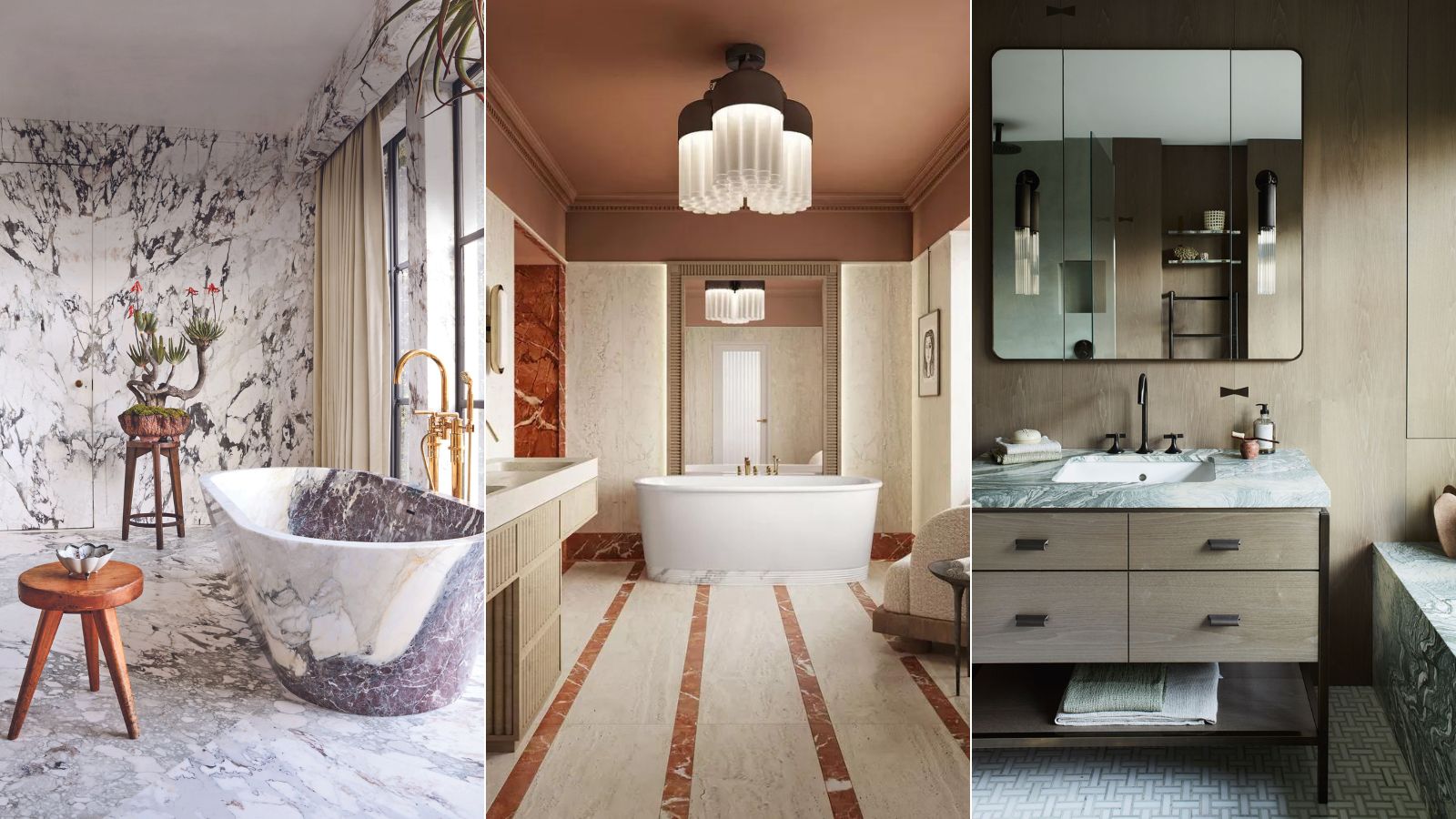
If you only introduce 'quiet luxury' to one space, then make that space the bathroom. But in a fast-paced world, what is quiet luxury?
For many of us, it is simply about having more time for ourselves and the opportunity to relax away from the pressures of an ‘always on’ world. There’s little doubt that this has affected bathroom design in a significant way: Trend analysis company Trend Monitor points to the ‘key role of the bathroom’, particularly in stress management, as the ‘global trend for wellness develops’.
‘Luxury bathrooms can now be so much more than purely functional spaces,’ explains Yousef Mansuri, head of design at C.P. Hart. ‘More of our customers want to create an oasis of luxury and wellbeing at the heart of their home – somewhere calm that they can enjoy as a private retreat to de-stress and unwind.' We call this trend 'quiet luxury' because it’s a way for people to wrap themselves in comfort and a quiet combination of comfort and luxury.’
Quiet luxury bathroom design should evoke a mood that can be created with simple moments that make us pause, such as calming bathroom color ideas, luxury materials that sing not shout, and wellness bathrooms with fittings that offer spa-like experiences, such as massaging showers, hydrotherapy baths, and state-of-the-art steam rooms and saunas.
How to get the quiet luxury look in your bathroom
The best 'quiet luxury' bathroom ideas are anything but boring – and we have included a ton of added-value interior design advice, too.
1. Use a luxurious material as the main attraction
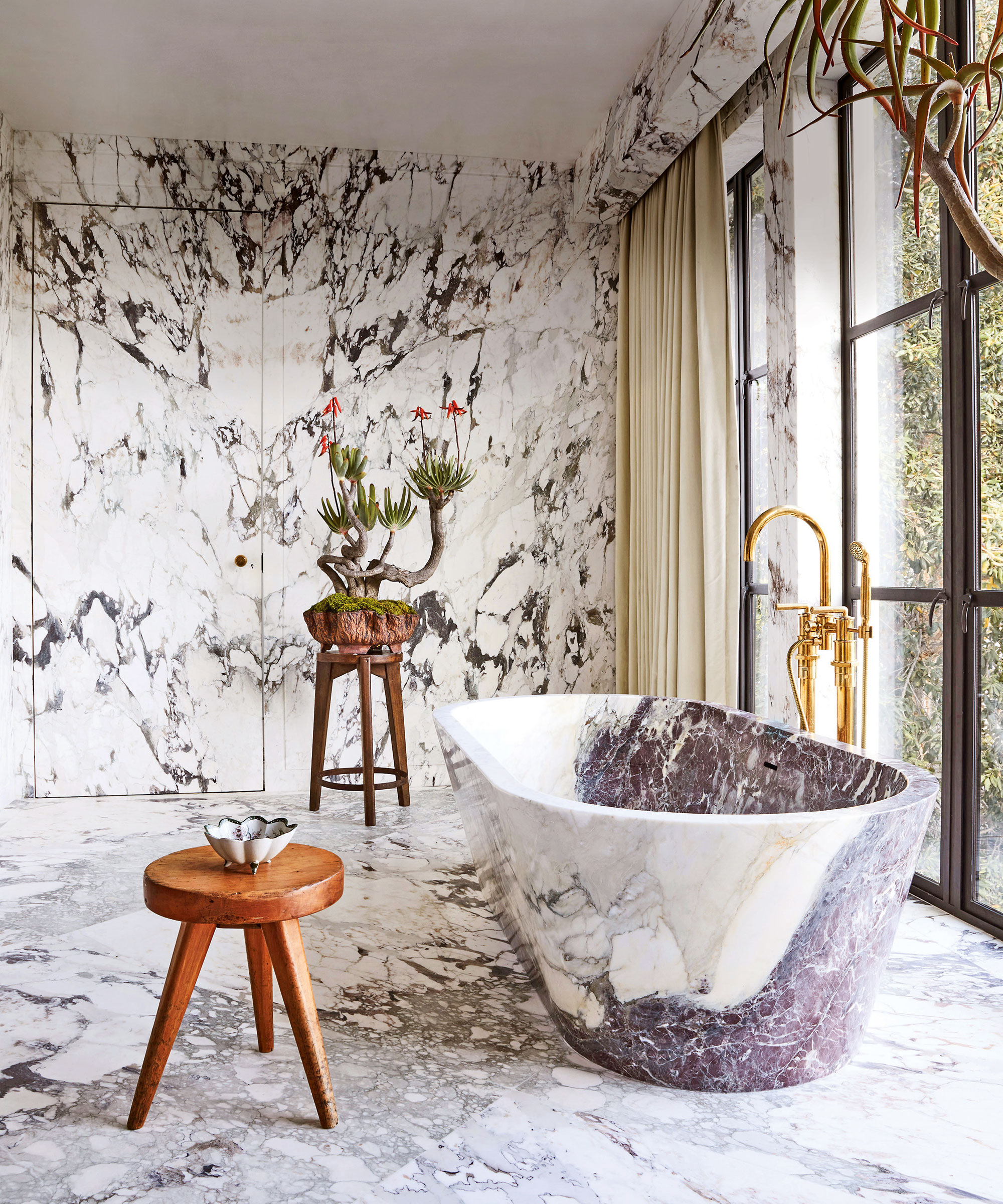
When it comes to designing a bathroom that exudes quiet luxury, put the focus on materials that will make a difference.
Using marble as a single floor-to-ceiling surface in a bathroom is timelessly elegant – and spectacularly luxurious. The practice dates to the Romans, who decorated bathrooms and public rooms in marble.
This bathroom by LA-based designer Jane Hallworth features in Barbara Sallick’s book, The Ultimate Bath, available on Amazon. The dramatically veined marble walls and floor create a theatrical element to the bathroom, which is then elevated further by the addition of a matching marble bath.
There is a point at which it is possible to overdo the use of one material, however. To avoid the space looking sterile and cold, add a warm finish in a material such as wood or metal as a subtle touch.
2. Invest in timeworn, classic furniture

Antique and vintage cabinets are well worth considering for their innate character and capacity to ground a stark space. Selecting time-worn furniture can help take the edge off the perfect ‘newness’ of sanitaryware and other hard surfaces for an old-money aesthetic.
Seek out period pieces made from close-grained hardwoods like oak, teak, and mahogany for the best moisture resistance. Thanks to decades of waxing and varnishing, antique furniture should have already established a decent layer of humidity protection but do check for any damage and reseal if required.
Cabinets, closets, and chests that sit on feet, rather than flush-to-the-floor plinths, will be safer from water ingress at ground level.
3. Pick the best style and finish for your hardware
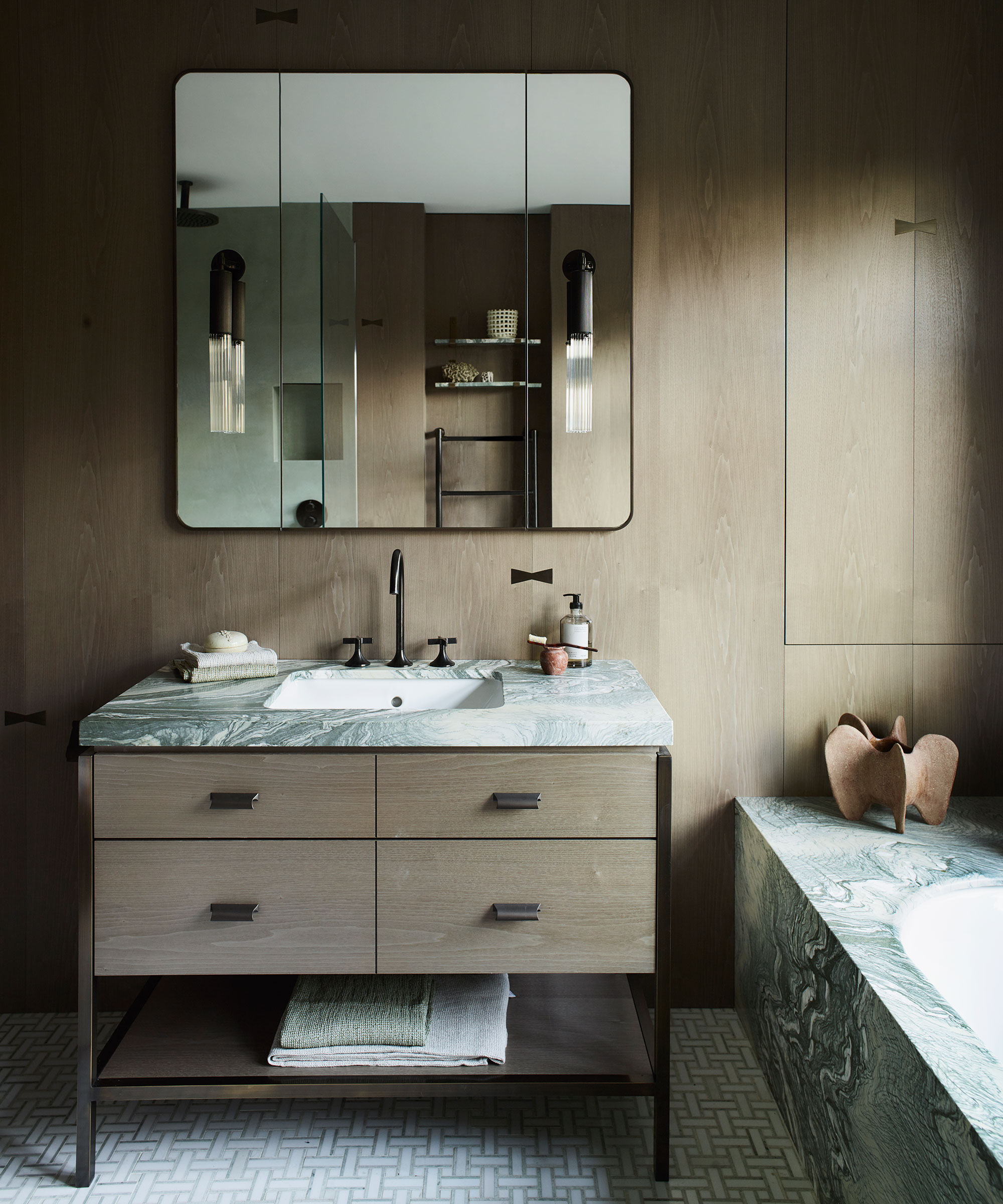
Bathroom hardware plays an important practical role in quiet luxury design, but many designers see it as a key style element that’s used in much the same way as jewelry finishes an outfit.
‘A bathroom should always contain a harmonious array of materials, metals, colors, textures and shapes,’ says Alberto Lutzu, designer, of West One Bathrooms. He recommends selecting the style and finish of the taps, shower fittings and accessories at the same time as you’re putting together the sanitaryware, furniture and tile selections.
‘Bathroom hardware finishes are a huge trend, with a move away from “standard” chrome to create a more unique and tailored look,’ says Yousef Mansuri, director of design, C.P. Hart. While many manufacturers offer their products in a range of finishes, it is not always easy to match across a suite of products, especially if they come from different suppliers.
Interior designer Irene Gunter, founder of Gunter & Co, looks for matching finishes or has pieces re-plated to achieve the best result. ‘If you’re on a budget, matt black is a great option as there are many handles, mirror frames, wall lights and matching hardware items available,’ she says.
4. Design a space for wellness with a quiet luxury color palette
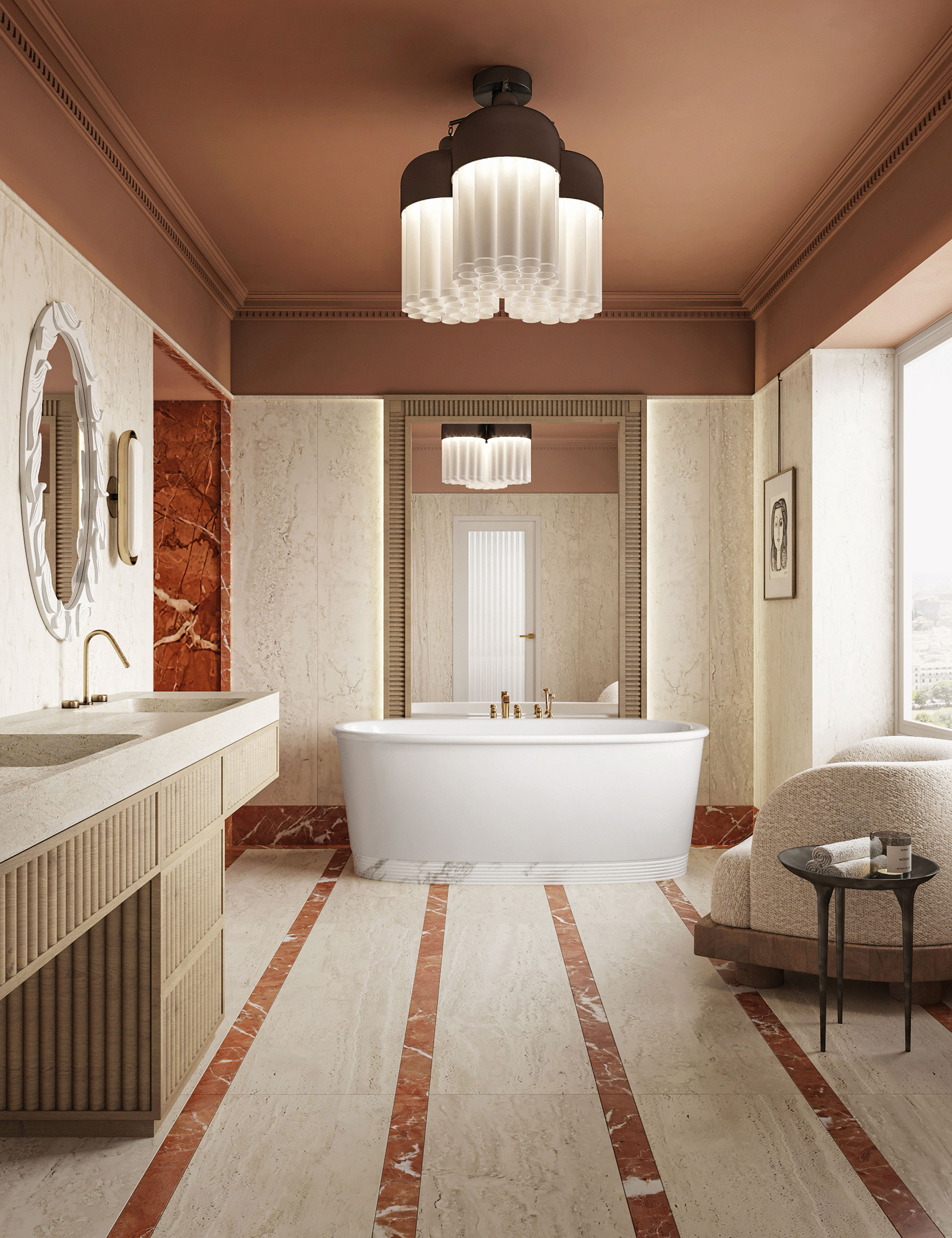
When it comes to designing a wellness room in the master bathroom, the luxury of space itself can provide a huge advantage.
In this generous apartment in uptown Barcelona, the interior design team That Home Studio were lucky to work with high ceilings, large windows and the potential to incorporate a vast walk-in shower area.
The balance of textures was key; fluted timber, bouclé upholstery and carved mirror frames all serve to soften the hard surfaces, while enhancing that sense of lavishness usually only experienced at the most exclusive spa resorts.
Painting the ceiling in dark terracotta (Little Greene’s Tuscan Red is similar), deflects from the imposing ceiling height for a more intimate atmosphere.
5. Design a minimalist space for visual quiet
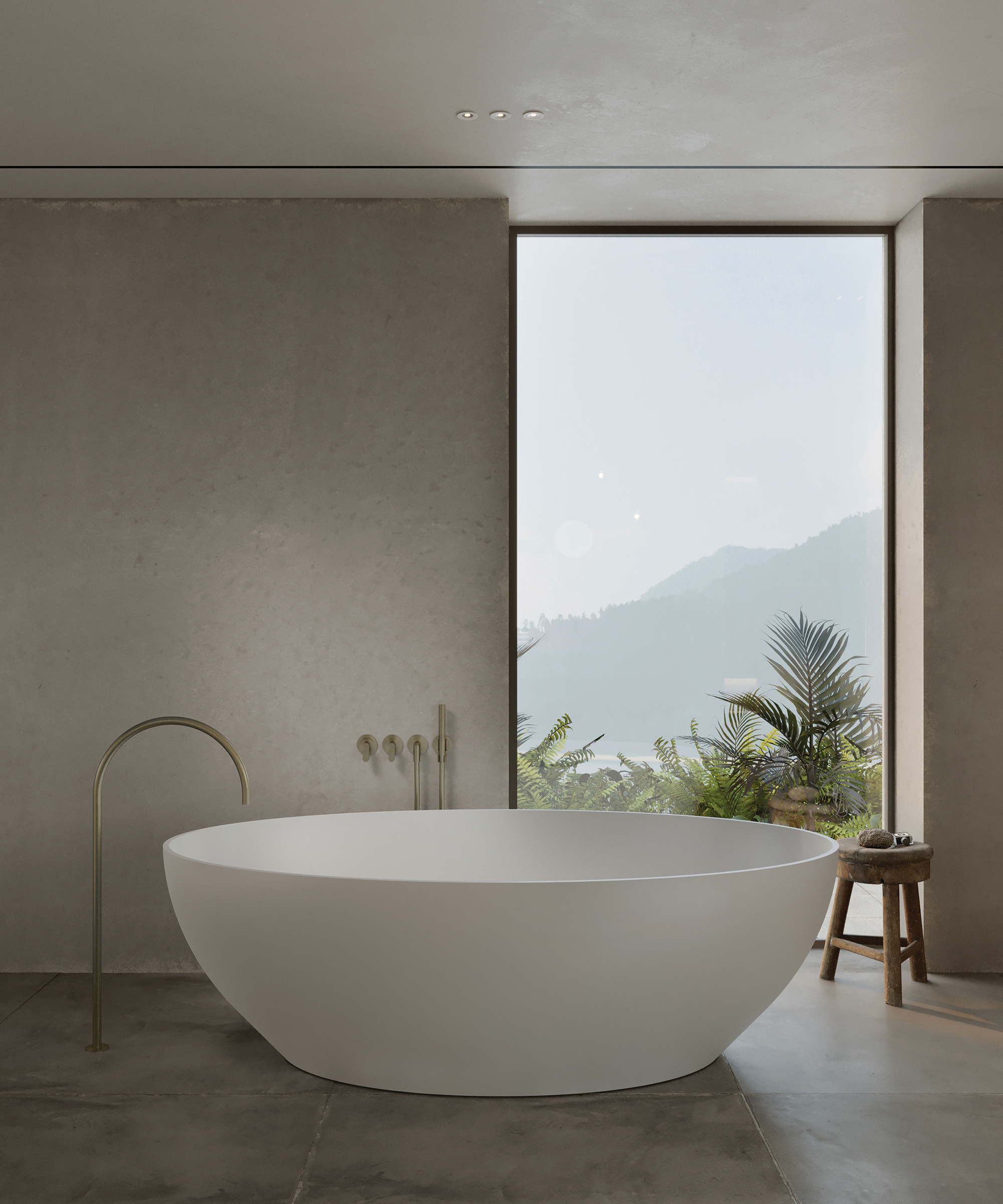
'The spa bathroom is a special place, for relaxation and taking some time for yourself,' says architect John Pawson on designing a sanctuary for quiet luxury.
'As one of the most important rooms in the house, it needs a lot of design energy, as how you deal with the bath, the basin, the shower, and the privacy of the loo all in one room can get interesting. Also, sustainability is a pressing issue, so how we use water and heat without wastage requires thoughtful consideration.'
'Visually, I like to keep things clear. I spent time designing my bathroom range for Cocoon because the taps and shower heads are strong features in the space and I want them to be as elegant as possible and functional. Regarding surfaces, I like marble for basins and vanity tops, though a white porcelain basin can be beautiful, too. I’m not worried about using wood in a bathroom, providing it is sealed, treated with care, and not flooded with water.'
'I provide lots of deep drawers in the vanity because it’s difficult to relax if there’s stuff everywhere. If you want to enjoy the experience of bathing, the ritual of splashing cool water on your face at the basin, or stepping into the shower to wash away your worries, you need visual quiet.'







